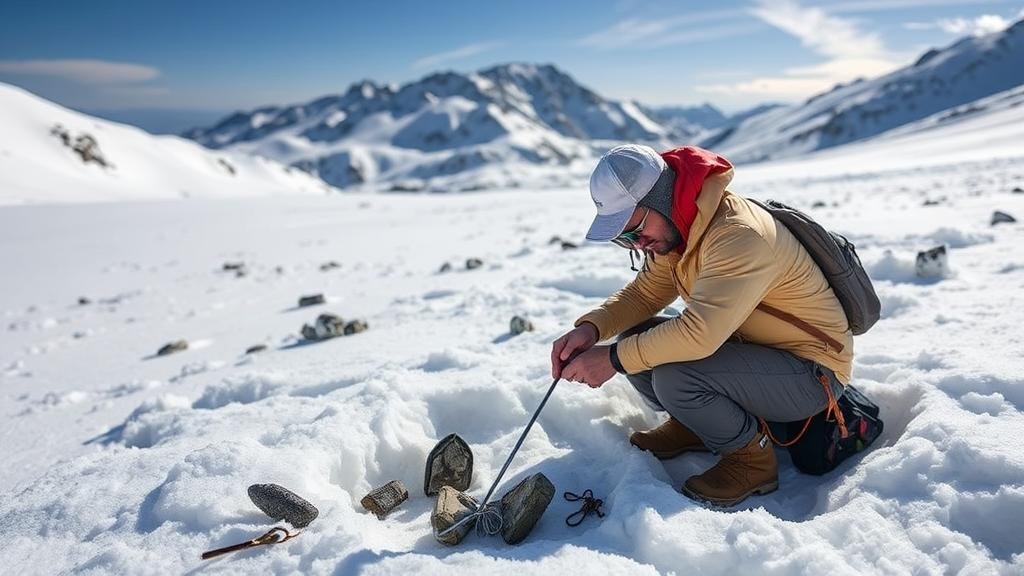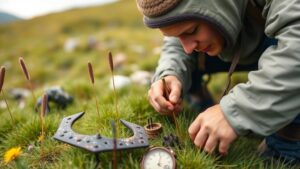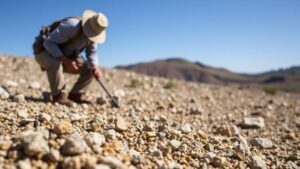Detecting in High Altitude Snowfields for Long-Lost Items Exposed by Melting
Detecting in High Altitude Snowfields for Long-Lost Items Exposed by Melting
The phenomenon of climate change has led to dramatic warming in mountainous regions, causing glaciers and snowfields to recede. This melting exposes long-lost items, ranging from personal belongings to archaeological artifacts, that have been buried for decades or even centuries. Detecting these items in high altitude snowfields poses unique challenges and opportunities. This article analyzes the methods, technologies, and best practices for effectively locating these historically rich artifacts.
The Importance of Detection
High altitude snowfields serve as time capsules, preserving organic and inorganic materials under layers of ice and snow. As these layers melt, the potential for recovering artifacts that can inform us about past human activities increases. The importance of detecting these items includes:
- Cultural Heritage: Artifacts may provide insights into historical lifestyles and behaviors.
- Scientific Research: Items can help reconstruct climate conditions and human adaptation over time.
- Historical Value: Discoveries may aid in local mythology, legacy, and the understanding of historical events.
For example, in 2010, a team of scientists uncovered World War II equipment in Norways melting glaciers, highlighting both the challenges faced by soldiers and the significance of preserving such findings.
Challenges in Detection
Detecting items in high altitude snowfields presents several challenges, including:
- Environmental Conditions: Cold temperatures, high winds, and altitude can hinder accessibility and visibility.
- Snow Composition: The varying density and composition of snow can obscure artifacts.
- Identification: Differentiating between natural debris and items of interest requires expertise.
For example, during expeditions in the Alps, researchers often face issues related to snowpack stability, which can lead to avalanche risks, complicating search operations.
Detection Methods
Visual and Manual Search Techniques
The most straightforward methods involve visual searches by trained experts who can identify anomalies in the snow. Manual techniques often include:
- Shoveling: Carefully excavating snow layers to reveal artifacts.
- Footprints Tracking: Following trails left by previous expeditions to known discovery sites.
In practice, archaeologists in the Andes perform systematic surface surveys, scrutinizing changes in snow patterns that might indicate hidden items.
Technological Approaches
Advancements in technology have significantly improved detection capabilities in high altitude snowfields. The following technologies are commonly used:
- Ground Penetrating Radar (GPR): GPR can penetrate snow layers and identify submerged objects based on differential reflection.
- Thermal Imaging: Thermal cameras can help detect heat signatures from decaying organic remains or metal artifacts.
- Drone Surveying: Drones equipped with high-resolution cameras and sensors can efficiently cover large areas and provide aerial surveys.
In 2021, researchers utilized drone technology to map melting glaciers in the Swiss Alps, leading to the discovery of ancient remains dating back to the Iron Age.
Case Studies
Iconic Recoveries
Numerous case studies illustrate the effectiveness of detection in high altitude environments. One notable example is the discovery of ice mummies in the Ötztal Alps. ancient Iceman, named Ötzi, was found with an array of tools that provided a wealth of information about life over 5,000 years ago.
Also, a recent delve into melting Arctic ice yielded artifacts from the Viking Age, prompting extensive interdisciplinary research into Norse exploration in the Americas.
Community Involvement
Also, community-based initiatives have proved invaluable. Local mountaineers and hikers often report discoveries, leading to collaborative research opportunities with scientists. The Ice Patch Recovery project in Canada exemplifies this, where community members are pivotal in reporting and locating remnants.
Actionable Takeaways
Effective detection of long-lost items in high altitude snowfields requires a combination of traditional methods and modern technologies. Stakeholders, including researchers, local communities, and climate scientists, should:
- Invest in training for handling environmental challenges.
- Adopt state-of-the-art technologies, such as GPR and drones, to enhance detection efforts.
- Encourage local cooperation for reporting discoveries, fostering a sense of shared responsibility.
Ultimately, as high altitude snowfields continue to melt, the opportunities for significant archaeological and historical discoveries grow, necessitating preparedness and collaboration among all involved.



